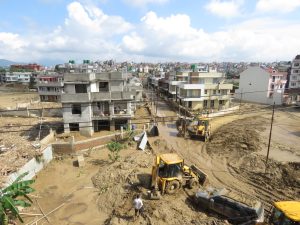More than 200 people have died in Nepal as a result of extreme weather conditions during this year’s monsoon season. Incessant rain lashed much of eastern and central Nepal, causing devastating floods. The Kathmandu Valley was badly hit. On October 2, Nepal’s government said 224 people had so far been confirmed dead, while more than 150 others were injured and 24 people were missing.
In addition to the loss of life, many homes, power plants, and roads have been damaged by floods and landslides.
“I’ve never before seen flooding on this scale in Kathmandu,” said Arun Bhakta Shrestha, the climate and environmental risks lead at the Hindu Kush Himalayan knowledge center, part of the International Centre for Integrated Mountain Development (ICIMOD).
The disaster serves as a reminder of Nepal’s vulnerability to climate change, including the risks associated with melting glaciers.
In recent years, many glaciers in the Himalayan region have retreated, with melt water collection in glacial lakes. If these lakes burst, they have the potential to cause massive floods, endangering downstream communities.
And Nepal’s Department of Hydrology and Meteorology claims that China has been withholding vital information on glacial lakes under its control in Tibet.
Department head Jagadishwor Karmacharya told the website Climate News that it is essential to obtain transparent information from the Chinese government in order to reduce the impact of floods.
Karmacharya said that China, Nepal, and India must collaborate to prevent disasters, adding that Nepal has been asking China for many years to supply data about its glacial lakes but China has not met promises to do so.
Tibet – which the People’s Republic of China manages as the Tibet Autonomous Region – has sometimes been described by geologists as Asia’s water tower. Many major rivers start there, which supply water to nearly two billion people downstream.
China is sensitive to external criticism that its governance of Tibet is marked by an irresponsible approach toward the environment.
“Poor environmental tactics have displaced Tibetan communities, destroyed religious sites, and degraded local ecosystems,” according to International Campaign for Tibet President, Tencho Gyatso. In his view, climate change – as well as an expansive hydropower dam network, extractive industries, and grassland degradation – threaten sustainable water management of Tibet’s water resources.
“China’s occupation and isolation of Tibet creates a global blind spot, which puts at risk the lives and livelihoods of 1.8 billion people downstream,” said Gyatso.
Earlier this year, a team of scientists published an article in the scientific journal Nature Geoscience that warned of the widespread societal and economic impact of expansion of the glacial lakes on the Tibetan Plateau.
The researchers said that “in the absence of hazard mitigation measures, lake expansion is projected to submerge critical human infrastructure, including more than 1,000 km of roads, approximately 500 settlements and around 10,000 sq km of ecological components, such as grasslands, wetlands and croplands.”
The scientists called for an international effort involving many countries, including China and Nepal, to address the problem.

































